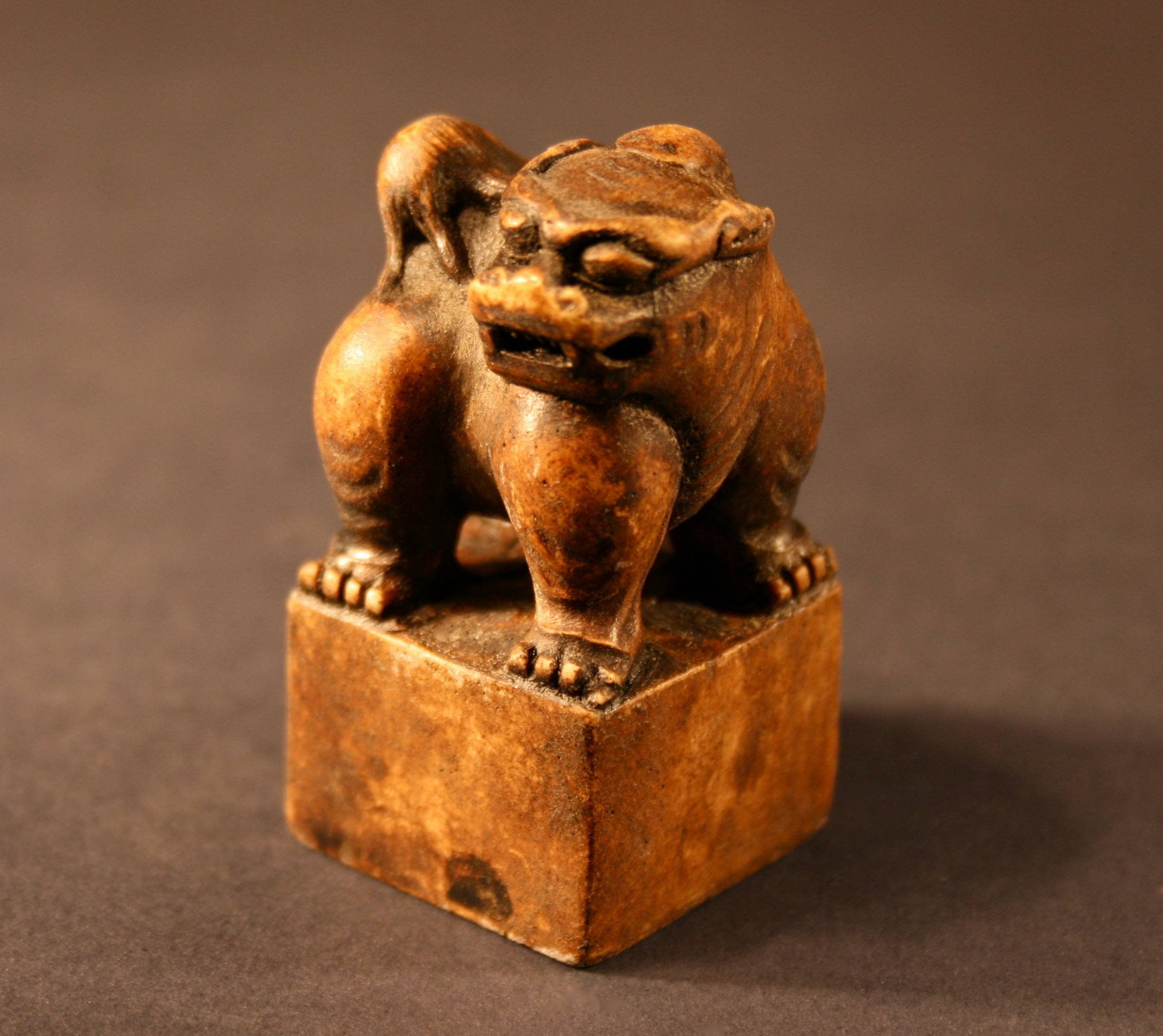

Title: Hand Carved Little Stone Foo Lion Dog Stamp Seal
Shipping: $29.00
Artist: N/A
Period: 20th Century
History: Ancient Art
Origin: Central Asia > China
Condition: Very Good
Item Date: N/A
Item ID: 310
Spectacular hand carved stone Chinese Foo Lion seal stamp. Foo dogs are actually lions. They originated in China, shi, meaning lion or shishi or stone lion. Yet they resemble the Chow Chow and Shih Tzu which led them to be called foo dogs (or fu dogs) in English. These Chinese guardian lions were found standing sentry in front of palaces, temples, and homes of the elite.
Chinese or Imperial guardian lions are a traditional Chinese architectural ornament. Typically made of stone, they are also known as stone lions or shishi. They are known in colloquial English as lion dogs or foo dogs.
Link: https://en.wikipedia.org/wiki/Chinese_guardian_lions
Asiatic lions are believed to be the ones depicted by the guardian lions in Chinese culture. With increased trade during the Han dynasty and cultural exchanges through the Silk road, lions were introduced into China from the ancient states of Central Asia by peoples of Sogdiana, Samarkand, and the Yuezhi (月氏) in the form of pelts and live tribute, along with stories about them from Buddhist priests and travelers of the time. Several instances of lions as imperial tributes from Central Asia were recorded in the document Book of the Later Han written from 25–220 CE. On one particular event, on the eleventh lunar month of 87 CE, "... an envoy from Parthia offered as tribute a lion and an ostrich"[9] to the Han court. Indeed, the lion was associated by the Han Chinese to earlier venerated creatures of the ancient Chinese, most notably by the monk Huilin who stated that "the mythic suan–ni is actually the lion, coming from the Western Regions". The Buddhist version of the Lion was originally introduced to Han China as the protector of dharma and these lions have been found in religious art as early as 208 BC. Gradually they were incorporated as guardians of the Chinese Imperial dharm. Lions seemed appropriately regal beasts to guard the emperor's gates and have been used as such since. There are various styles of guardian lions reflecting influences from different time periods, imperial dynasties, and regions of China. These styles vary in their artistic detail and adornment as well as in the depiction of the lions from fierce to serene. Although the form of the Chinese guardian lion was quite varied during its early history in China, the appearance, pose, and accessories of the lions eventually became standardized and formalized during the Ming and Qing dynasties into more or less its present form.